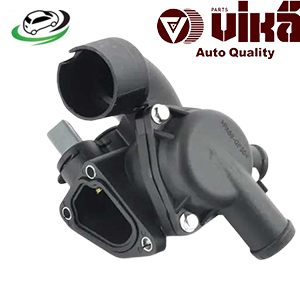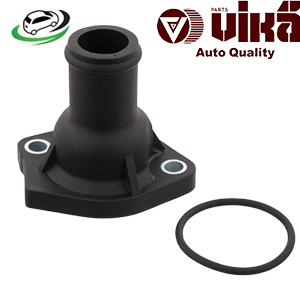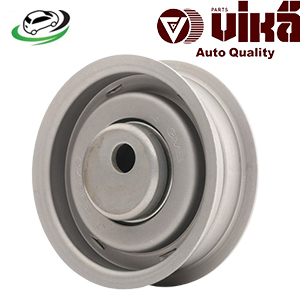-15%
Get Audi 80 FWD 4cyl/ VW Cabrio III All 2.0/ Golf III All 2.0/ Jetta III All 2.0 Timing Belt Tensioner 026109243E
The timing belt tensioner is a critical component in an internal combustion engine that plays a vital role in ensuring the proper functioning of the timing belt system. The timing belt is responsible for synchronizing the rotation of the crankshaft and camshaft(s), ensuring that the engine’s valves open and close at the appropriate times during each cylinder’s intake and exhaust strokes. The tensioner maintains the correct tension on the timing belt, preventing it from slipping or becoming loose, which could lead to catastrophic engine failure.
A properly functioning timing belt tensioner is essential for optimal engine performance, efficiency, and longevity. When the tensioner fails, it can lead to issues such as belt wear, misalignment, and, ultimately, a timing belt failure, which can cause significant engine damage.
2. Structure and Design of the Timing Belt Tensioner
The timing belt tensioner consists of several key components that work together to maintain the appropriate tension on the timing belt:
- Tensioner Pulley: This is the most visible part of the tensioner assembly and comes into direct contact with the timing belt. It is usually made from durable materials like plastic or metal to withstand the wear and tear of constant friction.
- Spring Mechanism: The tensioner incorporates a spring or hydraulic mechanism that applies pressure to the tensioner pulley, keeping it in contact with the timing belt. The spring compensates for any slack that may develop in the timing belt due to temperature changes or engine vibrations.
- Pivot Point: The tensioner pivots around a specific point, allowing the pulley to adjust its position based on the tension of the belt. This pivoting action ensures that the tensioner can adapt to any changes in the timing belt’s length as it stretches over time.
- Mounting Bracket: The tensioner is mounted to the engine using a bracket, which ensures that it remains securely in place while allowing for the necessary movement of the pulley.
- Adjustment Mechanism: Some tensioners have an adjustment mechanism, which allows for manual tension adjustments. However, many modern vehicles use automatic tensioners that self-adjust based on the tension needed.
The materials used in the construction of timing belt tensioners vary, but they are generally designed for durability and resistance to wear. Common materials include:
- Plastic: Often used in tensioner pulleys due to its lightweight nature and resistance to corrosion. However, plastic components can be susceptible to cracking over time.
- Metal: Many tensioners use metal pulleys for added strength and durability, especially in high-performance or heavy-duty applications.
3. How the Timing Belt Tensioner Works
The timing belt tensioner operates in conjunction with the timing belt to maintain optimal tension and ensure synchronized engine operation. Here’s how it works:
- Initial Tensioning: When the timing belt is installed, the tensioner applies initial tension to the belt. This tension is critical to prevent slipping and ensure proper timing between the crankshaft and camshaft.
- Compensating for Stretch: Over time, timing belts can stretch due to wear and the forces exerted on them during operation. The tensioner compensates for this stretch by automatically adjusting the tension as needed. In automatic tensioners, this adjustment is achieved through a spring or hydraulic mechanism that senses the tension on the belt.
- Maintaining Alignment: The tensioner also helps keep the timing belt properly aligned with the pulleys it engages. Misalignment can lead to premature wear on the belt and associated components, increasing the risk of failure.
- Damping Vibrations: The tensioner plays a role in dampening vibrations that can occur during engine operation. By maintaining consistent tension on the belt, the tensioner helps reduce noise and vibration, contributing to a smoother engine operation.
- Feedback Mechanism: In some advanced tensioner designs, there may be feedback mechanisms that monitor the tension and adjust accordingly. This ensures that the timing belt operates under optimal conditions at all times.
4. Importance of the Timing Belt Tensioner
The timing belt tensioner is crucial for several reasons:
- Ensures Proper Timing: The tensioner keeps the timing belt tight and properly aligned, ensuring that the crankshaft and camshaft(s) rotate in sync. This synchronization is vital for the engine’s performance and efficiency.
- Prevents Slipping and Wear: A properly functioning tensioner prevents the timing belt from slipping or becoming loose. If the belt slips, it can lead to misalignment of the engine’s valves and pistons, potentially resulting in serious engine damage.
- Improves Engine Efficiency: By maintaining the correct tension on the timing belt, the tensioner helps improve the overall efficiency of the engine. A properly tensioned belt allows for smoother operation and better power delivery.
- Extends Component Lifespan: The tensioner reduces stress on the timing belt and associated components, extending their lifespan. By preventing premature wear and failure, the tensioner contributes to lower maintenance costs and improved vehicle reliability.
- Dampens Noise and Vibration: The tensioner helps to dampen engine vibrations, resulting in a quieter and more comfortable driving experience. This is especially important in modern vehicles, where cabin noise levels are a significant factor in overall comfort.
5. Common Issues with Timing Belt Tensioners
Despite their importance, timing belt tensioners can develop issues over time, leading to potential problems:
- Worn or Damaged Pulley: The tensioner pulley can wear out or become damaged due to constant friction with the timing belt. A worn pulley may lead to increased noise, slipping, or misalignment.
- Spring Failure: The spring mechanism within the tensioner can lose tension over time or break, resulting in inadequate tension on the timing belt. This can cause the belt to become loose, leading to slippage and timing issues.
- Leaking Hydraulic Fluid: In hydraulic tensioners, fluid leaks can lead to loss of pressure and inadequate tension on the belt. A leaking hydraulic tensioner may require replacement to restore proper function.
- Misalignment: If the tensioner is not properly aligned or becomes loose, it can lead to improper tensioning of the timing belt, increasing the risk of failure.
- Noise and Vibration: A failing tensioner may produce unusual noises, such as squeaking or rattling, due to wear or inadequate tension. Increased vibrations may also indicate a problem with the tensioner.
6. Maintaining the Timing Belt Tensioner
Regular maintenance of the timing belt tensioner is essential to ensure its proper functioning and prevent issues. Here are some key maintenance tips:
- Follow Manufacturer Recommendations: Always follow the vehicle manufacturer’s guidelines regarding timing belt replacement intervals and tensioner inspection. Most manufacturers recommend replacing the timing belt and tensioner at the same time.
- Inspect for Wear: Periodically check the tensioner for signs of wear, such as cracks or damage to the pulley, as well as any unusual noises or vibrations. Address any issues promptly to prevent further damage.
- Replace the Tensioner: If the tensioner shows signs of wear or failure, it should be replaced immediately. Ignoring a failing tensioner can lead to catastrophic engine damage due to timing belt failure.
- Check for Leaks: In hydraulic tensioners, inspect for any signs of fluid leaks, which may indicate a failing component. If leaks are detected, the tensioner should be replaced.
- Monitor Engine Performance: Keep an eye on engine performance, including any changes in power delivery, noise levels, or unusual vibrations. These can be indicators of timing belt tensioner issues.
- Professional Inspection: If you’re unsure about the condition of your timing belt tensioner or have any concerns, it’s advisable to seek professional inspection and diagnosis. A qualified mechanic can assess the tensioner and related components for any issues.
7. Replacing the Timing Belt Tensioner
If it’s determined that the timing belt tensioner needs replacement, the process typically involves several steps:
- Gather Tools and Supplies: Before starting, gather all necessary tools, including sockets, wrenches, and any required replacement parts, including a new tensioner and gasket.
- Disconnect the Battery: Always disconnect the vehicle’s battery to prevent accidental short circuits while working on the engine.
- Remove the Timing Belt: Depending on the vehicle, it may be necessary to remove the timing belt to access the tensioner. Follow the manufacturer’s instructions for removing the belt, ensuring that the engine is at the correct position for reinstallation.
- Remove the Old Tensioner: Locate the timing belt tensioner and remove any bolts securing it in place. Carefully detach the tensioner from its mounting bracket.
- Install the New Tensioner: Position the new tensioner in place and secure it with the bolts. Make sure to follow the manufacturer’s torque specifications to ensure proper installation.
- Reinstall the Timing Belt: If the timing belt was removed, reinstall it following the manufacturer’s guidelines. Ensure that the belt is properly tensioned and aligned with the pulleys.
- Reconnect the Battery: Once everything is reassembled, reconnect the vehicle’s battery and start the engine to check for proper operation. Listen for any unusual noises and ensure that the timing belt is functioning correctly.
8. Conclusion
The timing belt tensioner is a crucial component of a vehicle’s engine that ensures the timing belt operates effectively and maintains synchronization between the crankshaft and camshaft(s). Its role in regulating tension, preventing slippage, and reducing wear on the timing belt is vital for optimal engine performance and longevity.
Regular maintenance and timely replacement of the tensioner are essential to prevent potential engine damage and ensure the reliability of the vehicle. Understanding the function and importance of the timing belt tensioner allows vehicle owners and technicians to take proactive measures in maintaining the health of their engines, ultimately leading to improved performance and reduced repair costs.
Follow us on Facebook for more parts.




Reviews
Clear filtersThere are no reviews yet.